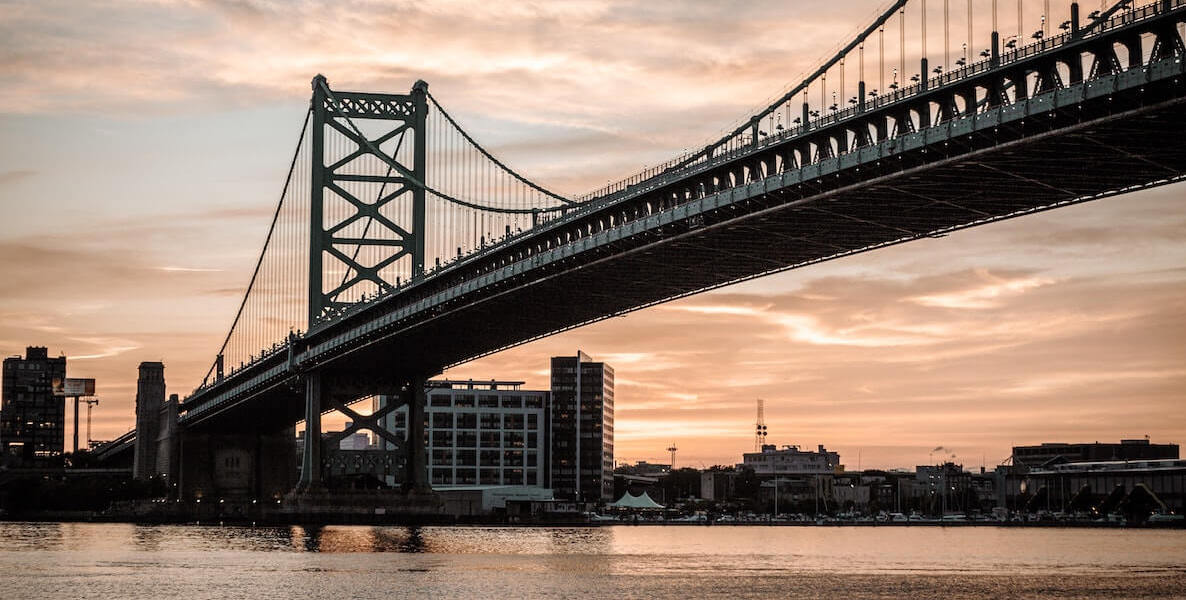With the signing of the bipartisan infrastructure bill, the playing field now shifts quickly from members of Congress to networks of public, private and civic leaders in communities across the country. Passing laws is one thing. Deploying federal resources in ways that actually drive systemic and transformative change is another.
The hidden story, unreported to date, is that the U.S. faces a major delivery crisis. After years of federal scarcity and unreliability, most communities haven’t planned or prepared for the prospect of abundant investments in economy shaping, energy shifting, climate solving, place making and the like. Most communities, simply put, are not ready for what’s coming.
The U.S. delivery crisis is caused by three separate but related issues
1. There is a fundamental disconnect between the organization of the federal government and the functioning of real communities. The federal government is the apex of fragmentation, vertically organized in a series of rigidly balkanized bureaucracies, mostly created in the mid-20th century when specialized expertise was deified. The federal government is now about to invest trillions of dollars through this legacy system via hundreds of programs across dozens of agencies. The recently enacted bipartisan infrastructure bill alone provides $110 billion for roads, $39 billion for transit, $25 billion for airports, $17 billion for ports, $65 billion for broadband, $73 billion for the electric grid and on and on and on.
Communities, by contrast, operate horizontally via networks that weave together disparate investments into a whole that is often greater than the sum of the parts. While federal programs focus on singular, technocratic solutions, communities emphasize the connections between different uses, routinely linking different forms of infrastructure with other investments in housing, economic and workforce development, place making and the remediation of former industrial properties.
Such multi-dimensional action, in downtowns and innovation districts and along waterfronts and commercial and industrial corridors, has a synergistic effect that catalyzes more growth and generates more value than would occur through siloed investments.
Rebuilding America is no longer a question of presidential leadership and congressional action. It is now a challenge of national initiative and local delivery. Who will step up to solve our nation’s delivery crisis?
2. The compartmentalization of federal programs makes the blending of public resources, let alone the leveraging of private and civic capital, inordinately complex. The adaptive reuse of an iconic community anchor, like the Dayton Arcade or the former Studebaker factory in South Bend or the Central Terminal in Buffalo, requires separate but related investments in historic preservation, affordable housing, entrepreneurial start-ups and energy, broadband and transportation infrastructure.
Yet funding for each of these investments will flow through separate agencies with different rules to different recipients along different time frames and via different allocation methods (e.g., block grants versus competitions versus tax incentives versus innovative financial products). The end result is a Rubik’s Cube of government programming and investment which requires dozens of different, often conflicting, funding sources in the same transaction.
3. The capacity of localities is not sized to the scale of federal funding or the tasks at hand. City and county governments (and many public authorities or quasi-public entities) have been degraded for decades, the long tail effect of President Reagan’s depiction of government as the problem.
Many nonprofit intermediaries that focus on supporting local entrepreneurs or delivering community housing are similarly understaffed and under-capitalized. This means that most communities do not have the personnel with the capabilities, competencies, bandwidth or muscle memory to plan transformative projects, apply for disparate federal sources, do the capital stacking necessary to make catalytic projects happen and coordinate multiple investments for synergistic effect.
The upshot of all this: History will show that the enactment of federal legislation was infinitely easier than local implementation and execution.
So, what to do?
The U.S. needs a surge in capacity
Federal programs do not magically yield tangible projects, initiatives and impact. People on the ground do. Prior eras of federal investment created vast employment opportunities either through federal agencies (e.g., Civilian Conservation Corps) or vast state and local building efforts.
This period must galvanize a 21st century army of technologically proficient community builders, with expertise in fields like planning, architecture, environment, engineering, small business, housing, workforce development, project finance and project management.
Unlike the New Deal, the surge in capacity must happen through a mix of national direction and local amplification. The time is ripe for the kind of corporate and philanthropic leadership we saw under President Clinton (when Eli Segal led the Welfare-to-Work Partnership) and President Obama (when the Rockefeller Foundation backed the Hurricane Sandy inspired Rebuild by Design effort).
The Biden Administration should work with leading businesses and foundations to galvanize billions in public, private and civic resources over the next three years to build local capacity. This will pay for tens of thousands of community builders to help develop and implement transformative projects, leveraging trillions in federal investment.
Failure to address the capacity gap will not only undermine the deployment of important federal investments; it will also exacerbate geographic inequities, given that many smaller communities, already struggling, are the places with the least ability to access and implement federal resources.
The U.S. needs a step shift towards routinization
Prior eras of federal investments invented simple financial products like the 30-year mortgage that boosted homeownership and wealth building for millions. This period must similarly routinize the design, financing and delivery of “community products,” a new housing development, a reclaimed industrial site, a revitalized commercial corridor, a nature- based climate solution and so forth.
Unlike the 30-year mortgage, community products are complex, inevitably requiring the mixing of public subsidy, private debt and concessionary or philanthropic capital. When constructed well, these capital stacks make a project feasible in the near term as well as sustainable for the long haul.
When codified smartly, they also enable exceptional, “shovel-worthy” projects to be repeated again and again. Routines, by their very definition, can be quite boring and lack the pizazz of the novel and exceptional. But routines are the vehicle for scaling impact, enabling efficiency and reducing the leakage of scarce public dollars to the hordes of lawyers, accountants, syndicators and others who benefit when complexity is the order of the day.
The U.S. needs a burst of institutional transformation
Prior eras of federal action catalyzed new federal institutions (e.g., the Federal Housing Administration) and new local institutions (e.g., public housing authorities, redevelopment authorities) tasked with bringing federal investments to the ground.
Many of these institutions are showing their age and are not taking maximum advantage of mechanisms used in other parts of the world to coordinate across disparate disciplines (see, e.g., How City-Based Ecosystems Drive Climate Solutions: The Helsinki Case) or generate long-term revenue for the public good (see, e.g., Cities and the Glasgow Climate Summit: Lessons from Copenhagen).
Similarly, multi-city networks in the U.S. focus mostly on aggregating political power and advocating for federal and state investments and reforms rather than on aggregating market power and perfecting financial models that balance public and private gain. Fortunately, a few U.S. cities are using this disruptive period to reform legacy institutions (see, e.g., Tulsa and the Remaking of Urban Governance). But we must go further.
This period should see an explosion of institutional innovation. What about City Climate Commissions, now emerging in Europe, to marshal the disparate efforts necessary to achieve a low carbon, climate resilient future? Or Community Equity Corporations to boost wealth building in disadvantaged neighborhoods? Or Supplier Diversity Intermediaries to harmonize procurement practices across multiple public authorities to grow Black- and Brown-owned businesses? Or an Urban Investment League to help networks of cities build new norms of project finance and new models for public/private co-investment.
Rebuilding America is no longer a question of presidential leadership and congressional action. It is now a challenge of national initiative and local delivery. Who will step up to solve our nation’s delivery crisis?
Bruce Katz is the founding director of the Nowak Metro Finance Lab at Drexel University.
![]()
MORE ON INFRASTRUCTURE FROM THE CITIZEN
Photo by Chris Henry / Unsplash





